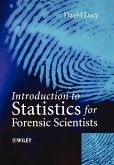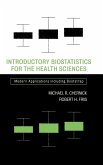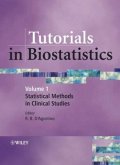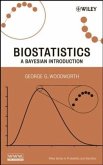Competing Risks
A Practical Perspective.
The term 'competing risks' refers to the situation when more than one type of failure can occur, and the observation of one type of failure hinders the observation of another. The need to understand, interpret and analyse competing risk data is key to the development of numerous areas of science. There are many research examples in which a specific type of failure is of interest, but practical issues make it extremely difficult to observe the time to the event of interest. Analyzing time to failure data in the presence of competing risks requires special Statistical tools. Competing Risks adopts a practical approach, with exercises and detailed examples throughout, using real data from cancer research.
_ Provides a comprehensive overview of he interpretation and analysis of competing risks.
_ Covers the main stages of a statistical analysis: planning and sample size calculation, analysis and interpretation.
_ Compares and contrasts both methods for analysing competing risks: cause specific hazard and hazard of subdistribution.
_ Presents the software available to perform the analysis in R, and includes macros for analysis in SAS.
_ Supplemented by a website featuring data sets,software and further material.
_ Competing Risks provides a practical guide to the area. The book is ideal for statisticians working in medical research, the pharmaceutical industry or public health. It will also prove invaluable for graduate students in applied statistics and biostatistics, as well as researchers in the medical field. The examples are chose from the medical field, however the methodology can be extended to any other research area where competing risks appear,such as sociology, economics and engineering.
STATISTICS IN PRACTICE
A series of practical books outlining the use of statistical techniques in a wide range of applications areas:
_ HUMAN AND BIOLOGICAL SCIENCES
_ EARTH AND ENVIRONMENTAL SCIENCES
_ INDUSTRY, COMMERCE AND FINANCE
Hinweis: Dieser Artikel kann nur an eine deutsche Lieferadresse ausgeliefert werden.
A Practical Perspective.
The term 'competing risks' refers to the situation when more than one type of failure can occur, and the observation of one type of failure hinders the observation of another. The need to understand, interpret and analyse competing risk data is key to the development of numerous areas of science. There are many research examples in which a specific type of failure is of interest, but practical issues make it extremely difficult to observe the time to the event of interest. Analyzing time to failure data in the presence of competing risks requires special Statistical tools. Competing Risks adopts a practical approach, with exercises and detailed examples throughout, using real data from cancer research.
_ Provides a comprehensive overview of he interpretation and analysis of competing risks.
_ Covers the main stages of a statistical analysis: planning and sample size calculation, analysis and interpretation.
_ Compares and contrasts both methods for analysing competing risks: cause specific hazard and hazard of subdistribution.
_ Presents the software available to perform the analysis in R, and includes macros for analysis in SAS.
_ Supplemented by a website featuring data sets,software and further material.
_ Competing Risks provides a practical guide to the area. The book is ideal for statisticians working in medical research, the pharmaceutical industry or public health. It will also prove invaluable for graduate students in applied statistics and biostatistics, as well as researchers in the medical field. The examples are chose from the medical field, however the methodology can be extended to any other research area where competing risks appear,such as sociology, economics and engineering.
STATISTICS IN PRACTICE
A series of practical books outlining the use of statistical techniques in a wide range of applications areas:
_ HUMAN AND BIOLOGICAL SCIENCES
_ EARTH AND ENVIRONMENTAL SCIENCES
_ INDUSTRY, COMMERCE AND FINANCE
Hinweis: Dieser Artikel kann nur an eine deutsche Lieferadresse ausgeliefert werden.
"Will help statisticians and researchers understand the complexity of the competing-risks problem and to complete the analysis. I am glad to have it on my shelf." ( Technometrics , August 2008)
"...a concise introduction to the field of competing risks in survival analysis, especially useful for practitioners and researchers in the biostatistics field." ( Zentralblatt MATH , 2007)
"...a concise introduction to the field of competing risks in survival analysis, especially useful for practitioners and researchers in the biostatistics field." ( Zentralblatt MATH , 2007)








